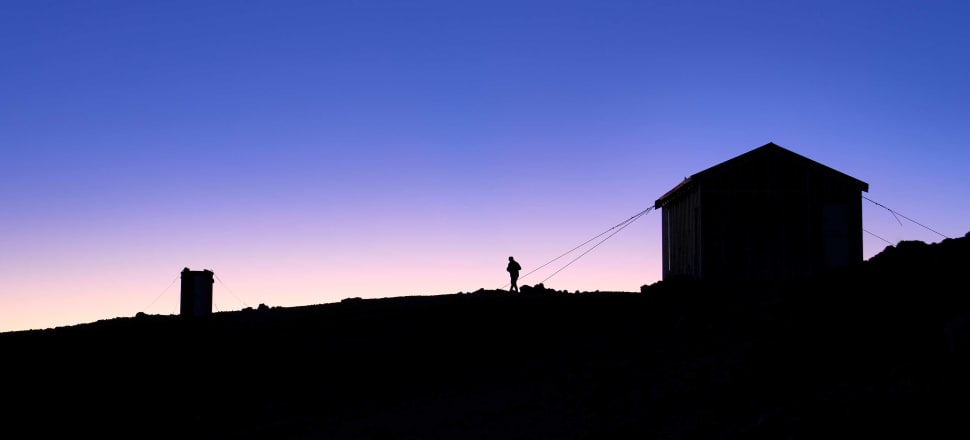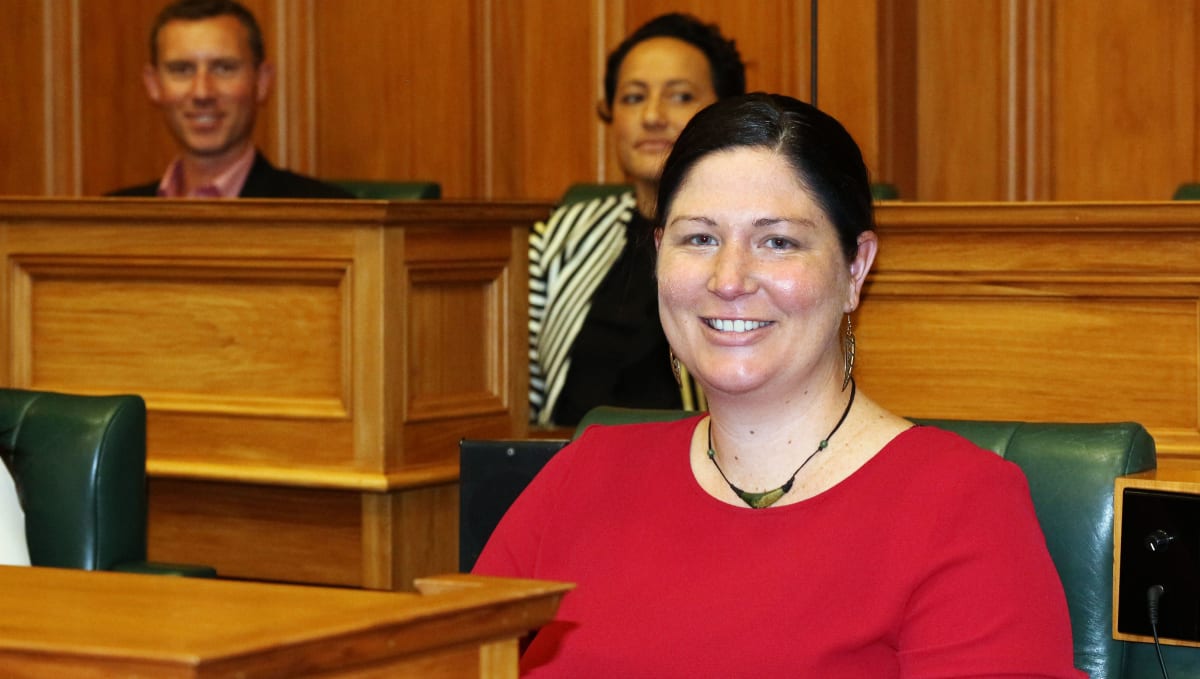
A downward spiral of $300 million of deferred maintenance has forced officials to consider drastic measures. David Williams reports
Unsustainable cost pressures are forcing the Department of Conservation to consider closures and divestments as it struggles with a massive backlog of work on the country’s ageing and neglected huts, tracks and structures.
Documents released to Newsroom under the Official Information Act confirm what is already evident on the South Island’s West Coast: that walking and biking tracks are neglected, overgrown and hazardous.
Safety concerns have been raised with director-general Penny Nelson – specifically the risks involving poorly designed cable structures, and the potential for collapses.
READ MORE: * What’s up with the tracks, DoC? * DoC forced to slash budgets in funding ‘crisis’
An internal briefing from March last year, headed ‘Overview of the current state of asset management’, said the book value of deferred renewal of visitors assets “is currently $300 million”. More than half that work is on tracks.
The department’s scheduling system put maintenance at 70,000 hours behind.
(DoC didn’t provide updated figures yesterday. The conservation estate contains 14,600km of tracks, 326 campsites, 967 backcountry huts, 1709 other buildings, and 13,449 structures, like bridges.)
Figures from August last year show work orders on 68 “high-risk structures” were overdue, with more than half in the southern and western South Island, and the Hauraki, Waikato and Taranaki regions.
A presentation from March last year listed a potential improvement for DoC was to “develop and implement an approach to managing divestiture and closing assets”.
Craig Benbow is national president of the Deerstalkers Association, and until recently was chair of the Backcountry Trust, established in 2017 to fund and support volunteers to maintain huts and build tracks.
He says $300 million is an astronomical and confronting figure, but he’d like to see the assumptions behind that.
“In terms of the huts normal New Zealanders use, they’re very simple structures that are easy to maintain, and not that expensive – the most expensive part is getting to and from them with helicopters and getting gear on-site.”
Federated Mountain Clubs vice-president Allan Brent isn’t surprised by DoC’s assessment of the parlous state of national visitor infrastructure. He welcomes the idea of some assets being passed on – but not to private operators.
“We would absolutely love it if DoC were to give assets to the Backcountry Trust.”
(Possible models for an organisation to fill the vacuum include Britain’s National Trust or the Appalachian Trail Conservancy in the United States.)
While Benbow points out there’s an expectation DoC will maintain infrastructure on conservation land, Brent says outdoor enthusiasts like trampers and hunters are ready and willing to take on responsibility for maintaining it.
“We can see the department can’t do it, so let’s have the honest conversation,” Brent says.
To Environmental Defence Society chief executive Gary Taylor, the scale of deferred maintenance is another indication of a grossly underfunded agency, created on the cheap, and which has never recovered to a “realistic quantum of funding for basically administering a third of New Zealand”. “It’s crazy.”
The situation continues the headaches for DoC's Penny Nelson, who replaced Lou Sanson as director-general in November 2021 and walked straight into a financial crisis.
In last year’s Budget, Conservation received new funding of $60 million, spread over four years, for visitor asset management.
“This work is underway and we regularly review our work programmes and re-examine our priorities,” says Stephanie Rowe, the deputy director-general of biodiversity, heritage and visitors, in an emailed statement.
Rowe doesn’t say when closures or divestments might become a reality, or how many huts, tracks, and structures might be for the chop. She says the department is going through its asset management programme methodically, and, tough decisions may need to be made.
“As yet no decisions have been made on what our future recreation network will look like. However, any decisions will include discussions with iwi and local communities including tourism operators.”
It’s not clear when the department planned to discuss it with the wider public.
“This is just the same old story that we’ve heard from DoC for a long, long time.” – Craig Benbow, Deerstalkers Association
The internal briefing from March last year, prepared for the department’s enterprise asset management governance board, puts forward visitor assets as an example of management that’s “financially unsustainable without changes to levels of service, budget uplifts, asset disposal or increased revenue”.
With tourists barred from the country during the pandemic, the department suffered a $19 million drop in revenue as the international visitor levy dried up.
A separate presentation, also from March, highlights the influence of Wellington bean-counters. It refers to a Treasury review of visitor assets, which, unsurprisingly, identified under-investment in maintaining and replacing Conservation assets.
The presentation suggests the department “re-orientate the network of assets to areas of high visitor demand and where New Zealanders live and travel”.
This theme reminds Benbow, of the Deerstalkers’ Association, of a long-term department plan, announced in 2004, to reduce the number of backcountry huts from 987 to 811.
“We’ve gone round and fixed a lot of those because we value them,” Benbow says, noting much of the work was done before the Backcountry Trust was created.
“This is just the same old story that we’ve heard from DoC for a long, long time – and we don’t agree with it whatsoever.”
DoC’s internal briefings lay out the spiral of deferred maintenance.
To try and minimise safety-related closures of visitor assets, the department has been prioritising what it calls “safety-critical work” over preventive maintance or routine work.
As unfortunate as it is predictable, deferred work leads to more assets becoming unsafe, meaning they get to the front of the queue as safety-critical.
A briefing to director-general Nelson in January last year – which warned the cycle of deferred maintenance wasn’t sustainable – said roughly 85 percent of recreation asset renewal projects were being prioritised because of visitor safety issues.
Safety and liability
After the 1995 Cave Creek disaster, in which 14 people died in the West Coast’s Paparoa National Park when a viewing platform collapsed, the under-resourced department had to confront its “make-do” mentality when it came to infrastructure.
Brent, of Federated Mountain Clubs, believes Conservation’s recent drive to upgrade popular routes – “Great Walks have become more and more like roads” – is less about safety and more about reducing liability. (Some might say that’s two sides of the same coin.)
Nestled in the middle of the 234 pages of official information material released by DoC is a presentation to Nelson and others, given by the department’s engineering manager Jonathan Calder in May last year, raising issues about the safety of cable structures.
He specifically refers to the 2015 collapse of the Hopuruahine suspension bridge, in which four French tourists escaped serious injury.
Such structures have low redundancy, Calder says, meaning if a critical component fails there’s no back-up. “The incident demonstrated that DoC’s cable structure load-test regime does not guarantee safety.”
There are 550 cable structures on conservation land, with an average age of 37 years. Most have low structural redundancy. Calder says there’s a risk of the a “Hopuruahine-type failure” – a risk that is difficult to quantify, but would be of high consequence.
Calder suggests the department give more consideration to adopting other bridge options, like steel trusses and arches. He notes: “DoC engineers, managers and officers could be found liable if fatalities resulted from a DoC cable structure collapse.”
A particular issue was inspections of high-tower cable structures didn’t include checks on cable saddles – “where cable fatigue is most likely to occur” – because they’re difficult to access.
Further work was recommended, including accelerating bridge replacements, employing consultants to review risks, and installing prominent signs advising of bridge load restrictions.

The Conservation department’s rising costs and staff shortages (in number and capability) are no surprise in the current high-inflation environment, and as the country adjusts to living with Covid-19.
However, the situation has worsened because of climate change-related storm damage, and stricter building standards and regulations adding pressure to upgrade buildings and infrastructure.
(Acting director-general Henry Weston told the Environment Committee in December last year: “Storms in just the past year have cost us about $5 million, and over the past four or five years our costs in terms of responding to damage to visitor assets created by adverse weather events has quadrupled.”)
A briefing from January last year to Bruce Parkes, the then deputy director-general of policy and visitor, said: “It is becoming more expensive to maintain our recreation assets to standard and ensure legislative and regulatory compliance, and these costs are forecast to rapidly increase in the short-term, outpacing our expected/agreed/established budget.
“The shortfall is forecast to result in unsustainable cost pressure.”
'Hard calls' to be made
This situation lands at the feet of Willow-Jean Prime, who was only confirmed in January (initially outside Cabinet) as Conservation Minister, a role that has had somewhat of a revolving door.
Signs of the department's financial crisis were evident in her briefing as incoming minister.
The document, prepared by the department, said “hard calls” need to be made about “what we invest in and where we disinvest”.
“We have a large and ageing visitor asset base, which we cannot continue to maintain and keep to required standards.
“We need to ensure that we provide for a spectrum of experiences, whilst making difficult decisions on what assets we replace and maintain, to ensure our visitor network is financially sustainable.”
The briefing says funding is expected to reduce from $916m in the current financial year, to $728m in 2026/27.
Gary Taylor, of Environmental Defence Society, says the department’s inability to carry out its crucial work shows the country doesn’t value the natural world enough.
“You would think that after all the years of advancing our understanding of the state of the country, and all of the environmental reporting, and all of the graduate schools that pop out people know about this stuff, that we’d be on a better track.
“But there’s still a lot of ignorance underpinning the way that politicians prioritise investment in nature.”
Benbow, of the Deerstalkers Association, says the department’s focus on biodiversity, ahead of recreation, is at the heart of the whole issue.
Backcountry huts were provided for the public of New Zealand, Benbow says. And at a time when the health and wellbeing of people is declining, he argues they’re probably more important than ever. “I do think the track network is incredibly valuable to the country. And unfortunately, accountants don't look at things like that.”
DoC's strategic planning and prioritisation for spending money is up to the department, Benbow says. “But a bit more guidance from the politicians certainly wouldn’t hurt.”
There’s not long to wait for the Government’s “no-frills” Budget will be delivered on May 18.
Will there be hundreds of millions of dollars earmarked to address the backlog of maintenance? A ‘no hut left behind’ strategy, if you like?
If not, it’s probably time for a frank, public discussion about DoC’s capabilities and the path forward. Especially if closures and offloads are just around the corner.







